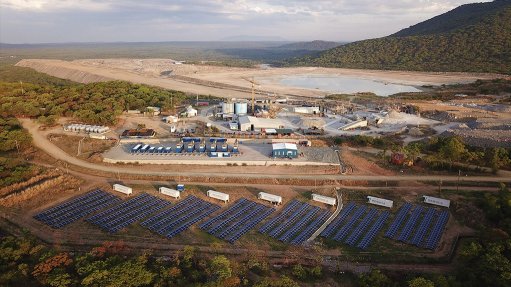
HIGHER GRADE Tanzania has a long history of gold mining and hosts some of the highest-grade gold deposits globally
With artisanal mining underpinning the livelihoods of many families in Tanzania, the risk remains that informal mining is not conducted safely, says Tanzanian gold mining company Shanta Gold CEO Eric Zurrin.
He adds that mining companies are well placed to improve the operating environment for artisanal mineworkers.
“Shanta manages a programme which trains such mineworkers to become farmers. What makes the programme valuable is that we guarantee them an export market through our partnership with the Export Trading Group – the largest soft commodity trader in Africa.”
Zurrin tells Mining Weekly that 878 farmers are producing crops, such as sesame, and Shanta Gold expects these numbers to double in 2020.
“Shanta also has a record of incorporating artisanal mineworkers as employees of the company,” he enthuses.
Following the Tanzanian government’s introduction of a policy to increase local representation in employee workforces and local content from suppliers, Shanta has fully endorsed this “as a great step forward”, adds Zurrin.
“Shanta’s mines are operated almost entirely by Tanzanians, with about 99% of the company’s employees comprising Tanzanian nationals. The employee base is globally competitive, and the mines’ senior management has worked for and led major mining companies across Africa and Asia.”
Further, Zurrin states that Tanzania has a long history of gold mining and hosts some of the highest-grade gold deposits globally. However, the country remains relatively underexplored and has the potential for further major discoveries.
The company’s flagship New Luika gold mine, in the Songwe district of south-western Tanzania, about 700 km south-west of the capital Dar es Salaam, started production in 2012. It produced 81 872 oz in 2018.
“The high quality of the resources, combined with tight operational control, makes New Luika one of the lowest-cost gold mines in its peer group and on the global cost curve,” Zurrin highlights.
Shanta has a portfolio of prospective exploration properties around its flagship, but requires further capital and drilling to convert it into mineable areas.
“Shanta holds exploration licences covering about 1 500 km2 in the country and owns 90% of a second mining project in Singida, which could become the next gold-producing mine in Tanzania, once built.”
Zurrin also reveals that efforts are under way to publicly list Singida Resources on the Dar es Salaam stock exchange.
Moreover, with many African governments revising their mining legislation and codes to allow for greater acceptance and ease of compliance, Zurrin comments that the company hopes for simplicity, clarity and stability in Tanzania’s charter.
“We are hoping for clarification and believe that we could get that in the near future,” he concludes.